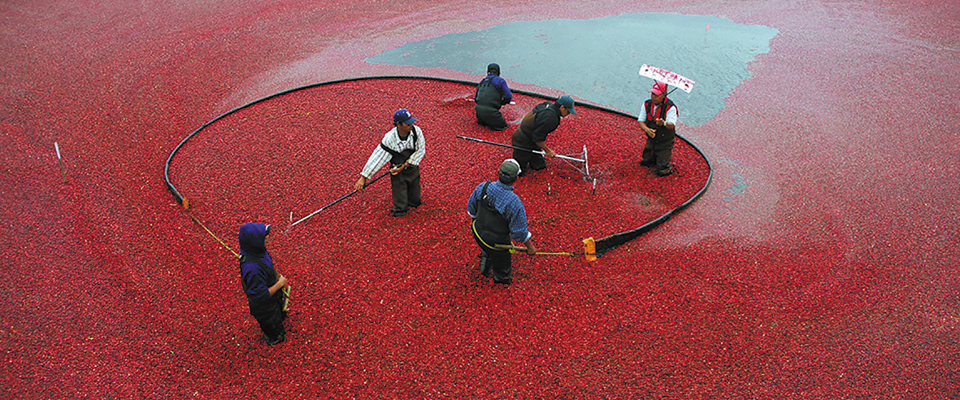Spotlight: Plymouth
Make a pilgrimage to a town that started a holiday
From the most famous stepping stone in American history to the first Thanksgiving, the town of Plymouth needs little introduction when it comes to the realm of legend and lore. It was here, in 1620, that the Pilgrims made their first colony.
Having braved the perilous journey across the Atlantic in search of a place to practice their religion in freedom, the Pilgrims came upon the modern-day coast of Massachusetts. Sailing into the calm, protected waters of Cape Cod Bay on the Mayflower, they set their sights upon the even calmer, even more protected waters of Plymouth Harbor. As legend tells it, they first alighted on land by stepping first on a small boulder—now known far and wide as the Plymouth Rock.
As in those early days, the modern-day city of Plymouth starts at the water’s edge and moves inland. When you first arrive in town most of your attention will be directed at Pilgrim Memorial State Park, which hugs the shores of Plymouth Bay and serves as a kind of doorstep to the downtown area.
More than a million people visit this small and humble park annually. The allure of walking in the footsteps of the pilgrims is a major reason why, but so is the park’s main attraction: Plymouth Rock. Totaling 10 tons of granite and half buried in sand, the rock is often an underwhelming sight to first-time visitors who are expecting something grander or more visceral. The question of whether or not the rock was actually the first stepping stone to the New World for the inhabitants of the Mayflower is also in question. But the magnitude of the rock’s symbolism is hard to deny. It not only represents the triumph of an incredible journey, undertaken in the face of discrimination, but also of the years of suffering and hardship that followed.

Destination Plymouth County
Mayflower Memories
To learn more about that incredible journey and struggle for survival, you’ll want to pay visits to three attractions, each of them operated by the Plimoth Plantation. If you’re already at the water’s edge, trying to convince yourself the rock is bigger than it looks, start at the Mayflower II, which is docked just a short distance away. This fully re-created version of the original Mayflower gives curious tour-goers a chance to see what life was like aboard a 17th-century tall ship that braved the high seas of the Atlantic en route to the New World. On deck you’ll encounter guides dressed in period costume who recount tales of the journey and life on board the ship.
From the Mayflower II, head to the Plimoth Grist Mill, located just a short walk from the waterfront, perched on the shores of Town Brook. The current mill was completed in 1970 but is an exact replica of the one first built in 1636, after the colonists approved the construction of a water-powered corn mill on the same site. The mill is open for touring daily, giving visitors a chance to learn how water from the Town Brook is diverted to mill corn on 200-year-old stones.
Rounding out the triple crown of Plimoth Plantation replicas and reproductions is a re-creation of a 17th-century English village, located at the plantation’s headquarters just a few miles east of the city center. Costumed guides and actors populate the village, which is constantly abuzz with communal activity and livestock. Visitors are free to roam the village at their own pace and interact with the actors freely. You might even walk in on a family of pilgrims in the middle of dinner, discussing the colony’s news of the day.

Getty Images/iStockphoto
Give Thanks for Plymouth
If traveling back in time and chatting with figures of yesteryear isn’t quite your cup of tea, more conventional experiences are also available for history buffs. The Pilgrim Hall Museum and the Jenney Museum are each located directly in the center of town, and each is bursting with incredible collections full of artifacts detailing the life and times of the pilgrims. The Pilgrim Hall Museum is a must-visit. Here you can view William Bradford’s Bible and the cradle of Peregrine White, the first baby of European descent born in North America.
Finally, if you’re visiting near the end of November you’ll be in for a major treat. It should come as no surprise that the birthplace of Thanksgiving takes the holiday more than a little seriously. For more than 350 years, the community of Plymouth has celebrated this historic occasion of peace-building and cooperation.
The town’s annual Thanksgiving Celebration unfolds over the course of three days each year, weaving a mix of guided walks, live concerts, parades and culminating with a massive outdoor food festival. People dress up as pilgrims and various historic organizations set up living history exhibits throughout town and along the waterfront, where the Mayflower II sits anchored in the background.
For More Information
Destination Plymouth County
508-747-7533
www.seeplymouth.com
Massachusetts Office of Travel & Tourism
800-227-6277
www.massvacation.com





